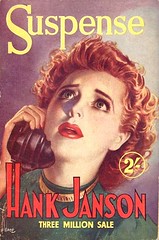 Info dumps, or long, unnatural passages of exposition, are a good way to bore and lose your reader. Sometimes we try to sneak in that backstory through dialogue, but it isn’t always better to have a character say the info dump than to think it!
Info dumps, or long, unnatural passages of exposition, are a good way to bore and lose your reader. Sometimes we try to sneak in that backstory through dialogue, but it isn’t always better to have a character say the info dump than to think it!
Find your dialogue info dumps
How can you tell if you’re dumping in dialogue? Here are a couple tips:
- If one character is sharing something with another character who should already know this—that might be an info dump
- If you’re really trying to talk to the reader with the dialogue—that might be an info dump
- If it’s more than a sentence or two of backstory—that might be an info dump
- If it doesn’t have anything to do with what’s going on in the present scene—that’s an info dump.
Fix those info dumps!
Here are a couple made-up instances of “info dumpy” dialogue. How would you fix them?
“As you know, my darling, we’ve been married for seven years, and our two children, Tina and Tommy, are almost perfect angels.”
“Yes, my love, and we’ve lived in this same house for three years, but we’re thinking about moving.”
“That’s the reactor or coil. It’s a a passive two-terminal electrical component which resists changes in electric current passing through it. It consists of a conductor such as a wire, usually wound into a coil. When a current flows through it, energy is stored in a magnetic field in the coil. When the current flowing through an inductor changes, the time-varying magnetic field induces a voltage in the conductor, according to Faraday’s law of electromagnetic induction, which by Lenz’s law opposes the change in current that created it.”
“Do you remember Jimmy? The guy from high school who was virtually president of the A/V club, but then went on to make it big in the dot-com boom? He managed to get out before the bubble burst, and he’s still living large in Silicon Valley. I heard he actually sold Page & Brin the name for Google. It was originally called Backrub, of course.”
“Look, I know you’re going through a hard time with your breakup, but I just need to tell you this right this minute: when I was seven, I had this puppy, and he got lost and we looked everywhere for him . . . [ten pages later] . . . and that’s why I don’t like cheese.”
Share your solutions in the comments and we’ll take a look at some fixes next week!
Photo by HomeSpot HQ






 But then again, you might. Just as tension springs from conflict, suspense is created by anticipation. So the same things that fix scene tension might not fix story suspense.
But then again, you might. Just as tension springs from conflict, suspense is created by anticipation. So the same things that fix scene tension might not fix story suspense.
